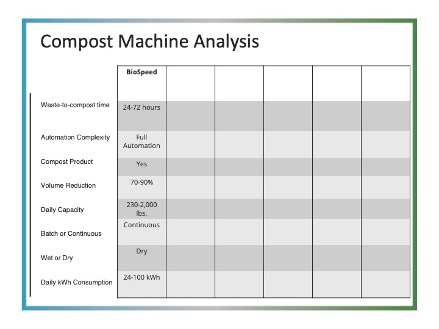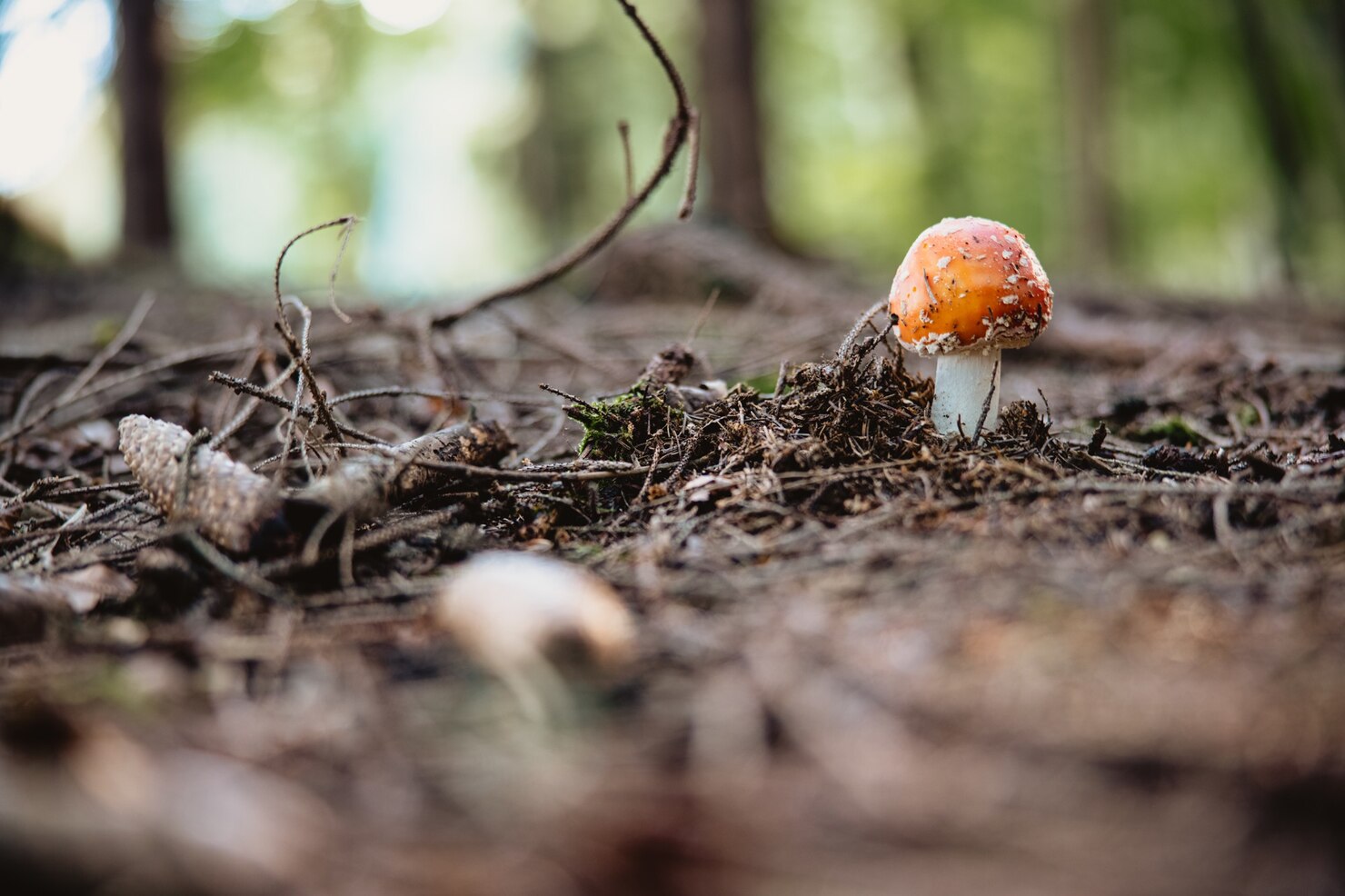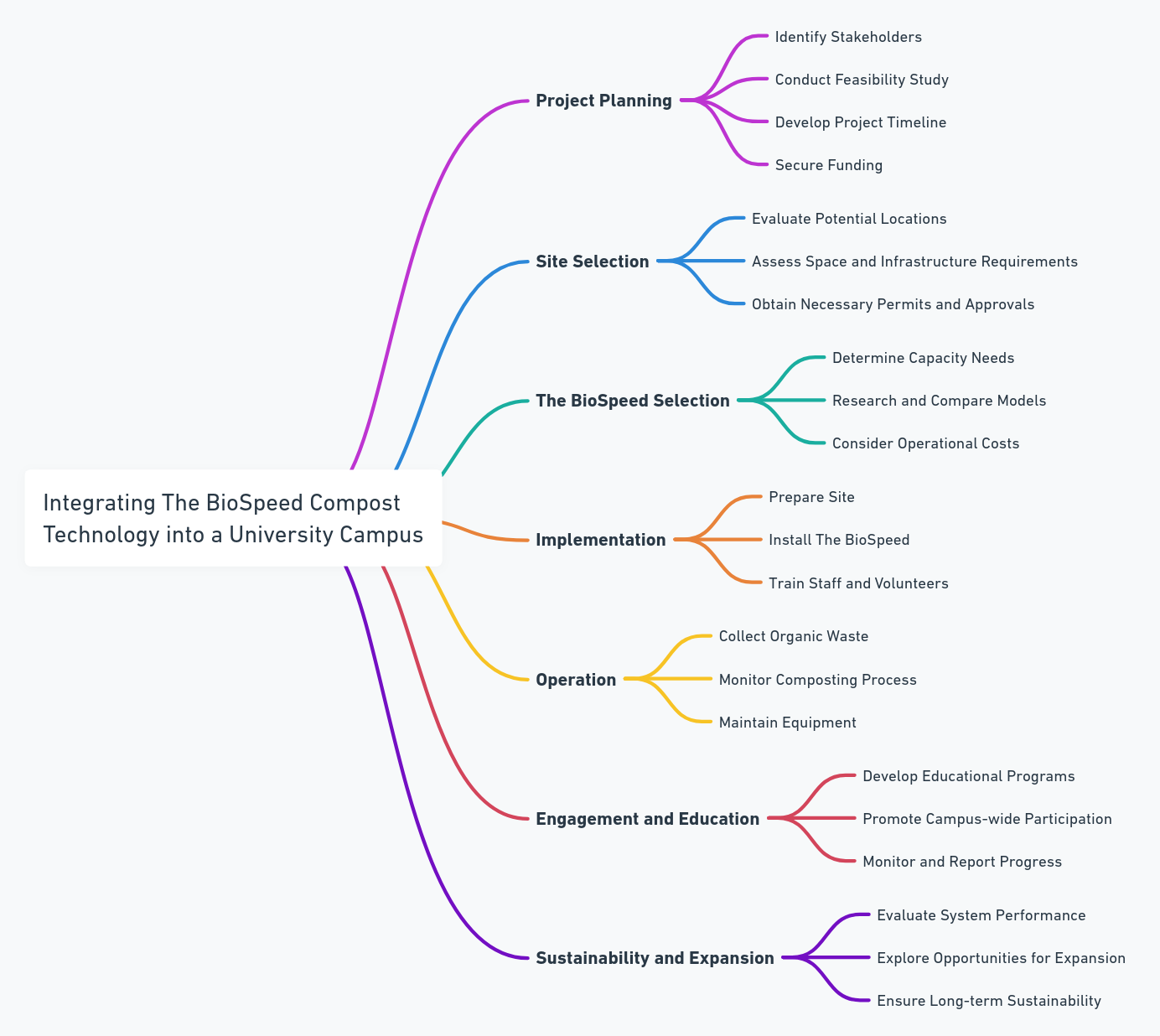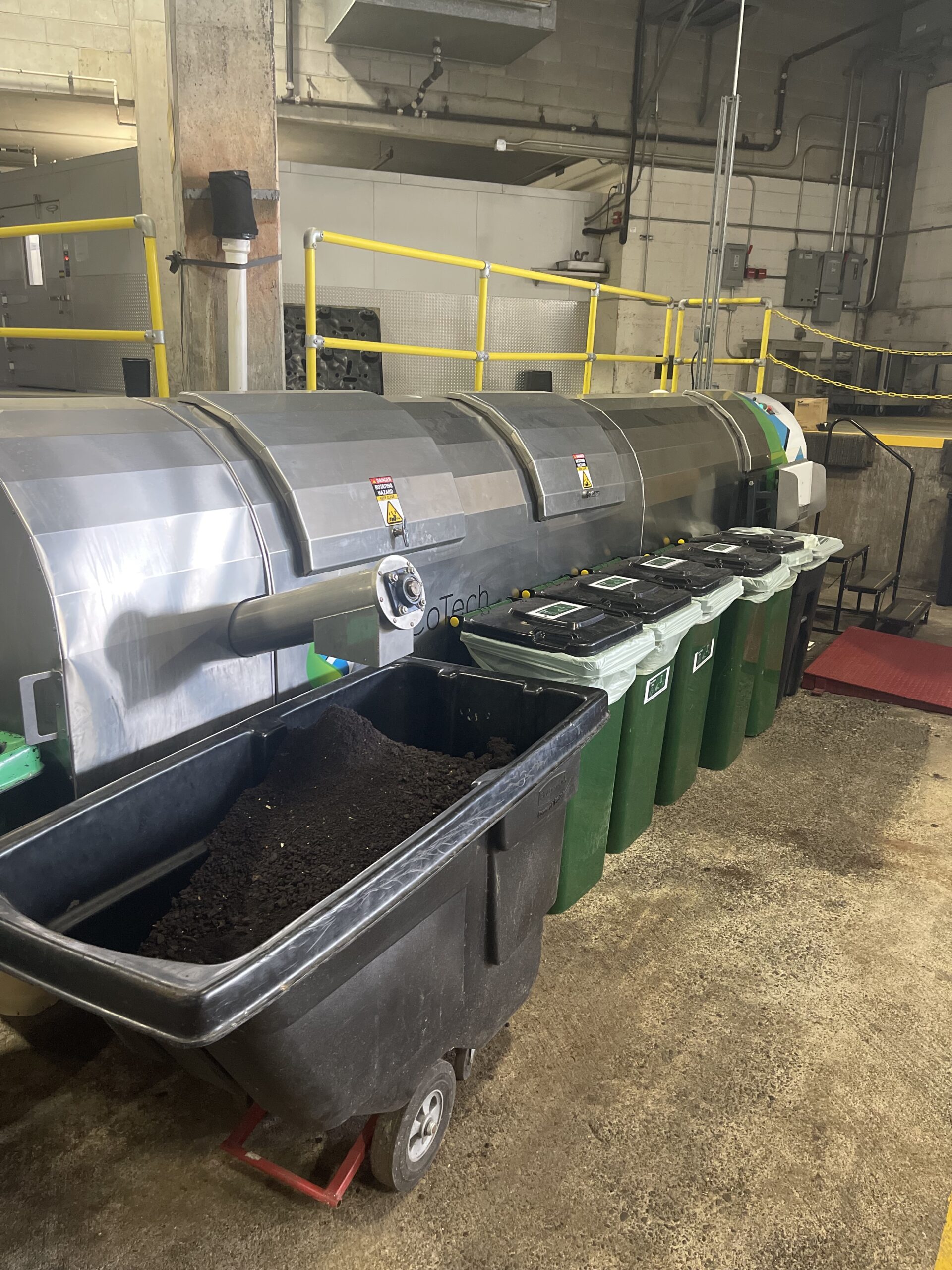In the realm of sustainable gardening, the quest for natural, effective solutions to enhance soil health and productivity is never-ending. Among the myriad of options, one stands out not just for its efficacy but for its remarkable sustainability: mushroom compost. Often hailed as a garden’s secret superfood, mushroom compost is a treasure trove of benefits waiting to be unlocked by sustainability professionals and gardening enthusiasts alike.
What is Mushroom Compost?
Mushroom compost, often referred to as spent mushroom substrate, is a byproduct of the mushroom farming industry. It’s composed of organic materials like straw, poultry manure, and peat, which have been used as a growing medium for mushrooms. After the mushrooms have been harvested, the remaining material is pasteurized to kill any pathogens, resulting in a nutrient-rich compost that’s ready to breathe life into your garden.
The Environmental Benefits of Mushroom Compost
Mushroom compost stands at the intersection of waste management and sustainable gardening. Its production epitomizes the circular economy, transforming agricultural and industrial byproducts into a valuable resource. This not only reduces waste but also lessens our reliance on chemical fertilizers, which are often derived from non-renewable resources and can have detrimental effects on the environment.
Nutritional Profile: The Superfood Status
Mushroom compost is packed with nutrients essential for plant growth, such as nitrogen, phosphorus, and potassium, along with a host of micronutrients. Unlike synthetic fertilizers that offer a quick but fleeting nutrient boost, mushroom compost releases its riches slowly, ensuring that plants receive a steady supply of nutrients over time. This slow-release mechanism helps build long-term soil fertility and health, laying the groundwork for sustainable gardening success.
How Mushroom Compost Improves Soil Structure
One of the most significant benefits of mushroom compost is its ability to enhance soil structure. It improves aeration, allowing roots to breathe and grow more freely. It also enhances water retention in sandy soils and drainage in clay soils, creating an ideal environment for plant roots. These improvements can lead to healthier plants that are more resilient against pests and diseases.
Applications of Mushroom Compost in Sustainable Gardening
Mushroom compost is incredibly versatile and can be used in various gardening scenarios:
- Vegetable Gardens: Incorporate mushroom compost into your vegetable garden to boost yield and improve soil health.
- Flower Beds: Use it to enrich the soil for flowers, promoting vibrant blooms and robust growth.
- Lawns: Top-dress your lawn with mushroom compost to enhance its greenery and vitality.
When using mushroom compost, it’s essential to mix it well with the existing soil or use it as a mulch. Its high organic matter content not only feeds the soil but also improves its physical properties.
Let’s take a closer look: Mushroom Compost Studies Published in Science Direct
- Spent Mushroom Substrate (SMS): This is the residual waste from the mushroom cultivation industry, typically containing a mix of agricultural wastes such as straw, animal manure, and inorganic substances like gypsum and limestone.
- By-products Valorization: Mushroom cultivation generates a significant amount of by-products, which have potential applications in bioremediation, production of nutraceuticals, bioactive compounds, animal feed, energy production, and biobased materials.
- Nutritional Value: The by-products, including SMS, have great nutritional value and can be used in various applications. For instance, SMS can be an efficient animal feed and a source for energy production and biobased materials.
- Environmental Benefits: Mushroom cultivation helps in recycling lignocellulosic wastes by converting them into food for human consumption. The by-product, SMS, can be applied in several applications, contributing to environmental sustainability.
- Residue Management: For every kilogram of mushroom fruiting body produced, there is a resultant by-product of 5–6 kg. Managing these residues is crucial for both economic and environmental reasons.
- Applications of SMS: SMS can be used for bioremediation purposes, recovering highly valued products, and as a substrate for further mushroom cultivation. It is also noted for its potential in improving soil quality, absorbing pollutants, and serving as a carrier for microbes with plant growth-promoting properties.
Specific Benefits of SMS:
- Soil Quality Improvement: SMS can enhance soil quality, making it a valuable resource for agriculture.
- Bioremediation: Due to its composition, SMS can be used for the biodegradation and bioremediation of toxic pollutants, such as phenolic compounds, fungicides, and polycyclic aromatic hydrocarbons (PAHs).
- Production of Enzymes: SMS is a source for extracting crude enzymes like lignin peroxidase, laccase, and manganese peroxidase, which are useful for environmental cleanup efforts.
- Antibacterial and Antioxidant Activities: Polysaccharides found in SMS have shown antibacterial, antioxidant, antitumor, and renoprotective activities.
- Agricultural Use: SMS improves soil quality and shows effectiveness against many soil-borne plant pathogens, making it a valuable addition to agricultural practices.
Challenges and Considerations
While mushroom compost is generally beneficial, there are a few considerations to keep in mind. Its salt content can be higher than other composts, which might not suit salt-sensitive plants. However, this issue can often be mitigated by using the compost in moderation and ensuring it’s well-composted and aged.
Another consideration is the initial ammonia smell, which dissipates as the compost cures. It’s a small price to pay for the myriad benefits mushroom compost brings to the garden.
Getting Started with Mushroom Compost
For those looking to integrate mushroom compost into their gardening practice, sourcing quality compost is key. Many garden centers and compost suppliers offer mushroom compost, or you can connect with local mushroom producers who might be looking for sustainable ways to dispose of their spent substrate.
For the DIY enthusiasts, making your own mushroom compost can be a rewarding project. While it won’t be identical to the commercial product (since it won’t have gone through the mushroom growing process), you can still create a nutrient-rich compost by mimicking the ingredients and composting process.
Conclusion
Mushroom compost is a true superfood for gardens, offering a sustainable, nutrient-rich solution to enhance soil health and boost plant growth. Its benefits extend beyond nutrition, improving soil structure, water management, and overall garden vitality. By incorporating mushroom compost into your gardening practices, you’re not just nurturing your plants; you’re contributing to a more sustainable and environmentally friendly gardening ecosystem.
As we continue to explore and embrace sustainable gardening practices, let the secret superfood of mushroom compost inspire you to new heights of productivity and environmental stewardship. Your garden—and the planet—will thank you.
Call to Action
Have you used mushroom compost in your garden? Share your experiences and tips in the comments below. Let’s grow our knowledge and our gardens together, one scoop of compost at a time.
BioSpeed Compost Technology: Revolutionize Your Campus With These 7 Steps
In today’s rapidly evolving world, sustainability has become more than just a buzzword; it’s a necessity. Universities, as pillars of innovation and education, have a unique opportunity to lead by example in the global shift towards greener practices. One groundbreaking approach that’s setting new standards is the integration of The BioSpeed Compost Technology into university campuses. This isn’t just about waste management; it’s about transforming waste into wealth, fostering community engagement, and paving the way for a sustainable future. Let’s dive into how to implement this revolutionary technology into university campuses, one compost cycle at a time.
1. Project Planning: Laying the Groundwork for Green Innovation
The journey begins with meticulous project planning. Identifying stakeholders is crucial, as it brings together the minds and hearts that will drive the project forward. From students and faculty to administrative staff and external partners, each stakeholder plays a pivotal role in the project’s success. Conducting a feasibility study is next, ensuring that the dream of a greener campus is not only visionary but also viable. Developing a project timeline and securing funding are the final steps in turning the vision into a tangible plan. This phase sets the stage for a project that’s not just about installing a compost machine but about weaving sustainability into the fabric of campus life.
2. Site Selection: Choosing the Heart of Compost Operations
The next step is site selection, a critical phase where the ideal location for the BioSpeed is determined. This involves evaluating potential locations, assessing space and infrastructure requirements, and obtaining necessary permits and approvals. The chosen site will not only house the technology but also become a central hub for sustainability efforts on campus, symbolizing the university’s commitment to environmental stewardship.
3. Compost Machine Selection: Picking the Powerhouse of Sustainability
Selecting the BioSpeed Compost Technology involves more than just choosing a machine; it’s about choosing a partner in the university’s sustainability journey. Determining capacity needs is the first step, followed by researching and comparing models. Operational costs, manufacturing time, and the technology’s alignment with the university’s sustainability goals are all considered, ensuring that the chosen system is efficient, effective, and emblematic of the campus’s green aspirations.
4. Implementation: Turning Plans into Reality
With the planning and selection phases complete, it’s time for implementation. Preparing the site and installing the BioSpeed are monumental steps, but the process doesn’t stop there. Training staff and volunteers is essential, as they are the stewards of this green technology, ensuring its smooth operation and integrating it into the campus’s daily life.
5. Operation: The Heartbeat of Campus Sustainability
The operation of The BioSpeed is where the magic happens. Collecting organic waste, monitoring the composting process, and maintaining the equipment are daily tasks that contribute to a larger purpose: transforming waste into a resource. This phase is about more than just managing waste; it’s about nurturing a living, breathing ecosystem that supports the campus and the environment.
In just 5-10 minutes per day, users can wheel their organic waste to the machine. By following the BioSpeed Daily Checklist and refreshing up on BioSpeed training videos, users can ensure efficient and effective operations.
6. Engagement and Education: Cultivating a Green Culture
Perhaps the most transformative aspect of integrating the BioSpeed into a university campus is the opportunity for engagement and education. Developing educational programs and promoting campus-wide participation are essential for fostering a culture of sustainability. Through workshops, seminars, and hands-on experiences, students and staff are not just informed but also empowered to be active participants in the university’s sustainability efforts.
7. Sustainability and Expansion: Looking to the Future
The final piece of the puzzle is ensuring the long-term sustainability and potential expansion of the composting program. Evaluating system performance and exploring expansion opportunities are crucial for maintaining momentum and building on the successes of the initiative. This phase is about dreaming bigger, aiming higher, and ensuring that the university’s sustainability efforts continue to grow, evolve, and inspire.
(Campus Composting with the BioSpeed M4)
Conclusion: A Call to Action for Sustainable Transformation
The integration of the BioSpeed Compost Technology into university campuses is more than just an environmental initiative; it’s a call to action. It’s a testament to what can be achieved when innovation, commitment, and community come together for a common purpose. This isn’t just about managing waste; it’s about reimagining what a sustainable future looks like and taking bold steps towards it. Universities have the power to lead by example, showing the world that sustainability is not just possible but also practical, impactful, and essential. The BioSpeed is not just changing the game in sustainability; it’s setting a new standard for what it means to be a green campus. The future is green, and it starts with us.
Industrial Compost Machines – Beginner’s Guide
Industrial compost machines, biodigesters, in-vessel systems, food waste accelerators are just a few of the names used to describe a range of products in organic waste composting. Each of these titles are virtually synonymous, and are best described as mechanical equipment used to accelerate the decomposition of organic waste by optimizing variables. As this emerging industry attempts to establish continuity in its language and terms, you can use this beginner’s guide to familiarize yourself with the definitions, techniques, and pros and cons of the different types of compost machines.
Before we dive too deep into the feedstock, I want to quickly establish a foundation for the discussion.
- Composting has officially caught up with the technological age. The technologies detailed in this guide are vastly different than the rotting mound of egg shells and coffee grounds in the corner of your grandparents yard. And significantly more advanced than the dripping, hand-operated tumbler used in your 4th grade science class. Today’s technologies are computer-automated, data-driven, and manufactured at volume with premium electrical and motor components.
- Although compost machines can be utilized off-site, the vast majority of purchasers are searching for technologies they can integrate into their business operations on-site. By implementing a machine at their place of business, users experience immediate cost savings on their waste management bill. This is because anywhere between 30-50% of our waste streams consist of compostable material. Users will also reap substantial environmental benefits that can drive carbon reduction goals and marketing campaigns.
- Modern compost machines are the gateway to a circular economy as it relates to food waste and other compostable material. This decentralized approach to waste management eliminates waste hauling, renders landfills useless, and generates a valuable commodity, compost.
Let’s get started.
The chemistry of composting: Aerobic Machines Vs. Anaerobic Machines
From a bird’s eye view, there are two ways that organic material can decompose. One is in the presence of oxygen, aerobic composting. One is with the absence of oxygen, anaerobic composting. For someone new to composting, aerobic composting is likely what first comes to mind when you imagine the process. Think of a dark, earthy material that is combined with dirt to use as potting soil or other soil amendments.
Aerobic composting machines can use agitation paddles, rotating drums, high powered fans, or even water to provide the organic material (and the microbial environment) with an abundant source of oxygen. With the presence of oxygen, the microbes deconstruct molecular bonds and off-put Co2. According to the U.S. Environmental Protection Agency (EPA), aerobic composting is considered biogenic. Which by definition, means that Co2 is naturally occurring and thereby not considered a human-caused greenhouse gas. As previously mentioned, aerobic composting generates the dirt-like product sold at your local gardening store.
On the other hand, anaerobic composting is achieved in a vacuum, where the organic material (and the microbial environment) receives no oxygen. These machines are largely municipal scale and require 10’s or even 100’s of staff members to successfully operate. Through the anaerobic process, methane gas is released and ideally captured. After the methane is captured, it can be converted to renewable natural gas (RNG) and used as energy for the grid or in RNG vehicles. The remaining product is a frothy, sludge effluent that requires further processing for proper disposal. Due to the difficulty of maintaining a vacuum and further rendering into usable compounds, anaerobic machines are almost never used on-site. With some exceptions in farming & agriculture and very large campuses.
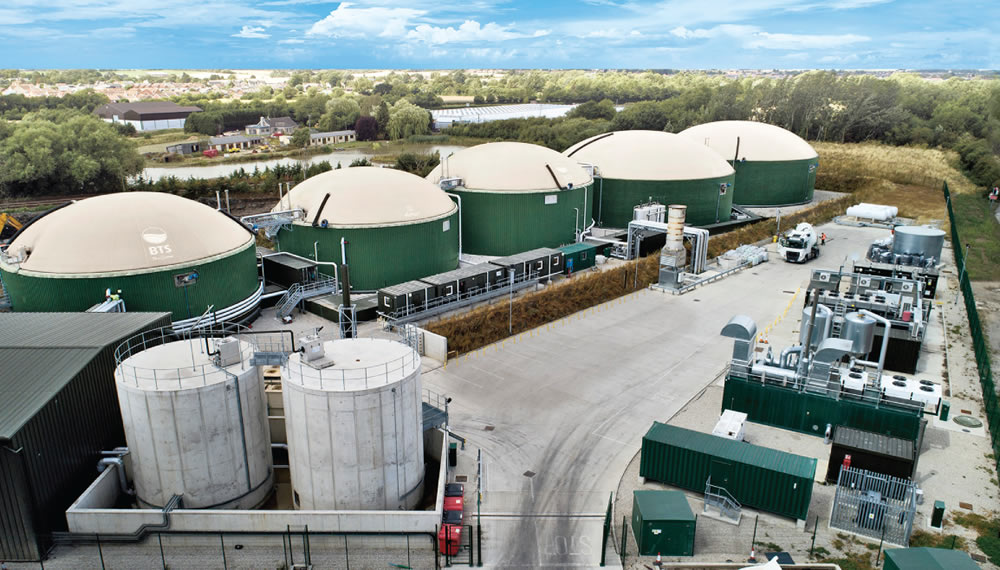 (Source: BioCycle Magazine)
(Source: BioCycle Magazine)
As illustrated above, anaerobic technologies are rarely used for on-site purposes, so the remainder of the guide will focus on the nuances between aerobic composting machines.
Aerobic Composting Machine Differentiators
Wet Machines & Liquifiers
Wet machines use water to provide oxygen to the organic matter. These machines are retrofitted to an existing building’s plumbing system and fresh water is pumped into the machine. These technologies require thousands of gallons of fresh water annually.
After processing, the resultant material is an effluent sludge. This sludge is a nutrient-rich material that is never reintroduced to the soil. Rather, it is flushed back into the plumbing system as greywater and transported to the nearest waste water treatment facility. The major concern with flushing this material is the large amount of Biochemical oxygen demand (BOD). Research shows that BOD can be very corrosive to plumbing and difficult for wastewater treatment facilities to manage.
Although these technologies are likely more sustainable than traditional landfilling, there are significant hazards to consider before implementing a wet compost machine. For more details on wet systems, or ‘liquefiers’ as CalRecycle denotes them, check out this link.
Dry Machines
Dry compost machines on the other hand, do not require a freshwater input. They rely on oxygen from the surrounding air to effectively fuel the microbes. Through this process, the user will observe steam rising from the mass as the material degrades into a mostly dry product. Rather than an effluent flushed down the drain, dry compost machines produce a compost product with a wide range of applications including; erosion control, improved plant growth, pest and weed deterrence, mulch, potting soil, and more.
Depending on the users intended compost application, maturity, mineral, and biological tests can be conducted. Solvita has developed a cheap and easy to-use compost maturity test that will indicate whether the compost can be safely utilized in the user’s greenspace. The moisture content of the final product will also have some variation. Check out this video to learn more about how to conduct a moisture test in the field with no equipment required.
For all questions and concerns related to compost quality and usage, I always refer to the Field Guide to Compost. This is a fully comprehensive guide on all things compost and compost usage.
Batch machines
Batch compost machines operate like many of your common household appliances; wash machine, dryer, dish washer. The machine is loaded with organic waste and started. Depending on the product, there is a processing window ranging from just a few hours (in the case of residential machines like the Lomi Composter), to several days. Batch machines are best utilized when the organic waste stream remains at a consistent volume day-to-day. The draw back to the batch system, is that no additional waste can be added while the machine is processing. This can cause operational issues in a cafeteria, restaurant, or event, where there exist large influxes in waste volume day-to-day. The last thing a user needs is a rotting bucket of organics sitting in the kitchen, while they wait for the machine to finish processing. For this reason, batch machines are most useful in residential homes, with more consistent, smaller volumes of waste.
Continuous Machines
Continuous compost machines will either function using a large rotating drum or agitation paddles. There will exist a clearly defined input end and output end of the machine, and the waste will move linearly from end-to-end.
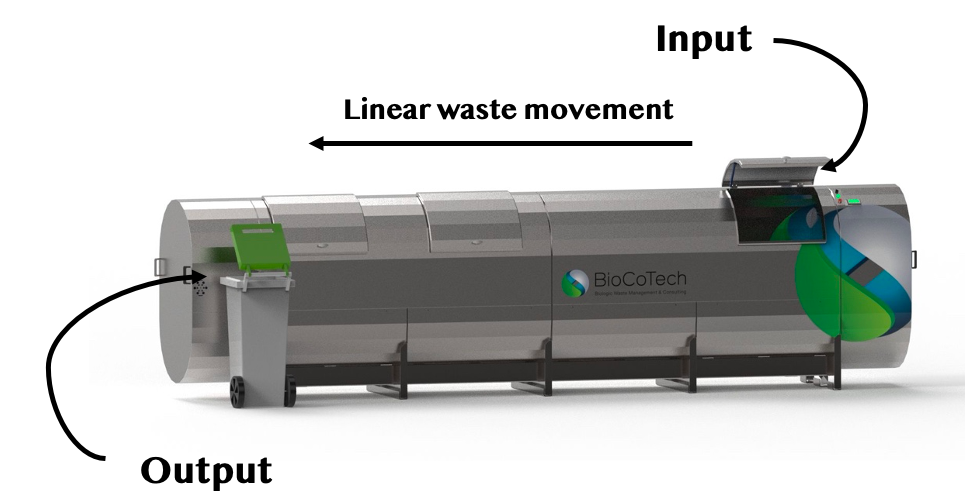
With a continuous system, the organic waste in the machine will continue processing and does not need to be dispensed prior to adding additional material. In other words, there is no need to stockpile organic waste as you patiently wait for the previous batch to finish processing. In fact, in a busy kitchen or cafeteria, there is little time to be concerned with these matters. Another advantage of most continuous systems, is automated dispensing of the compost product.
Moving on.
Now that we have established the most important variables to consider when considering your compost machine, let’s dive into the most important machine specs. In the same way you might consider engine capacity, MPG, or fuel tank size when purchasing a new car, there are a few specs to consider when purchasing a compost machine.
Daily Capacity
Arguably the most important spec to consider is the machine’s daily capacity, or how much waste the machine can handle on a day-to-day basis. This quantity can be measured through volume metrics like gallons or liters, or weight in kg. and lb. If the machine capacity is not clearly listed on the providers website or product brochure, be sure to reach out to a representative to nail down this detail. Check out the EPA’s volume-to-weight conversion factor sheet to start sizing your own operation.
Obviously, every kitchen, cafeteria, event center, and business café will generate different quantities of waste day-to-day. The trick here is to avoid over-sizing a machine. A machine that is too large can impact the composting process and will be an unnecessary cost. Similarly, try to avoid under-sizing the machine to the point where food waste must be stock piled or thrown into the landfill.
Waste-To-Compost Time
Possibly the most important mechanism of rapid decomposition through the composting process is agitation. By ‘turning’ compost, the composter effectively provides oxygen to the microbes at a consistent rate. In modern large-scale composting operations, you will witness large compost turning machinery that glides over the compost row and turns the compost over. In a municipal setting, these piles of compost are turned over every couple of days. Depending on the frequency of turning, the organic material can be composted in 1-6 months’ time.
However, by scaling down and increasing the frequency of turnover, in-vessel compost technologies can reduce the amount of time required to compost. This time frame can range anywhere from 24 hours to a few weeks, depending on the technology.
Automation Complexity
In today’s high-paced society, minimizing labor inputs is the name of the game. The less automated the machine, the more time the user will have to spend operating the machine.
Fully-automated machines will likely house a programmable logic controller (PLC) that will control all the mechanisms of the machine. Under these conditions, the user should spend only 5-10 minutes loading the machine, troubleshooting any issues, and managing the compost product. An example of the BioSpeed’s Standard Operating Procedures can be viewed in this YouTube video.
Compost Product
The landscape of the compost technology industry is new and there are many different types of machines entering the market. Naturally, some machines will be more effective than others and businesses will make a wide range of claims about their products. One claim to be weary of is that of dehydrator machines. Rather than producing a viable compost product that is ready to be applied to the earth, a dehydrator simply removes the moisture from the material with little to no decomposition occurring. When a dehydrated product is reintroduced to the earth, it can cause a number of issues including mold, rodents, odors, and more. According to CalRecycle, the product generated by dehydrators is no different than unprocessed organics and is still considered solid waste (rather than compost).
When considering an on-site compost machine, be sure to verify the type of output generated by the machine and whether or not it is in compliance with your state’s guidelines.
Daily kWh Consumption
The amount of electricity required to operate the machine is a final important spec to consider for two reasons:
- How will the cost of electricity extend the breakeven date and reduce ROI?
- How will the use of electricity factor into the company’s overall carbon footprint?
Fortunately, most machines will only require about 20-100 kWh per day, which is negligible considering the company’s current cost for waste collection and the GHG reduction provided by processing on-site. When conducting a full life cycle assessment, many compost machines can actually achieve net neutrality or net negativity. This is through the incredible carbon sequestration capabilities of compost.
Feel free to use our compost machine analysis template, when considering which machine will fit your business best.
